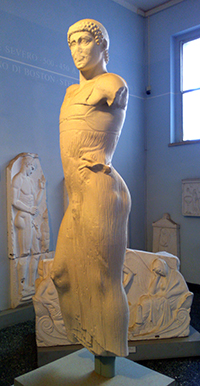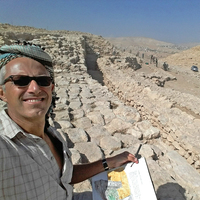
Mozia is a very small island close to Marsala at the Western cape of Sicily. A Phoenician trade port since the 8th century BCE, Mozia was connected to the Elymi and the Greek colonies of Magna Graecia. From the 6th to the 4th century BCE, Carthage took advantage of Mozia’s strategic position; thereafter Sicily became totally Roman after the Punic Wars. Professor Nigro’s excavations have brought to light the city walls, a Tofet burial site, and recently the sacred area of Kothon.
Lorenzo Nigro is an internationally recognized expert in Near Eastern and Phoenician-Punic Archaeology. He leads the excavations at Tell-es-Sultan/Jericho, and since 2002, those at Mozia.
The lecture will be in English.
Lorenzo Nigro: biography
Lorenzo Nigro MA, PhD, is Associate Professor of Near Eastern and Phoenician Punic Archaeology in the Department of Oriental Studies at Sapienza University of Rome. He is an archaeologist with 25 years of experience on the field in the Near East (starting from Ebla in Syria, 1989-1997) and the Mediterranean. Since 2002 he is the Director of Sapienza University Expedition to Motya, the Phoenician colony in Western Sicily, where he excavated the Sacred Area of the Kothon, the Acropolis, the Tophet and the city-walls (2002-2017). He is also the director of Sapienza University Archaeological Expedition to Palestine & Jordan (2004-2017) carrying on projects at the sites of Tell es-Sultan (ancient Jericho), Tell Abu Zarad (ancient Tappuah), and Bethlehem in Palestine; and Khirbet al-Batrawy, a 3rd millennium BC early city, in the Hashemite Kingdom of Jordan.
He is the coordinator of the rescue program “Oasis of Jericho” (JOAP-Jericho Oasis Archaeological Park) carried on by Sapienza with the Palestinian Ministry of Tourism & Antiquities and the Unesco funded by the Italian Ministry of Foreign Affairs and International Cooperation, which enlisted 103 archaeological sites in the Oasis of Jericho (published in the volume ROSAPAT 7). He started the catalogue of all archaeological and cultural sites in the West Bank (PADIS=Palestine Archaeological Databank and Information System: http://www.lasapienzatojericho.it/padis/), including the highly threatened areas of Bethlehem and Salfeet. He participated in many events and initiatives aimed at the protection and safeguard of the archaeological heritage in the Near East in strict cooperation with local authorities in Jordan, Palestine, and Lebanon (he is also collaborating with the Project EAMENA in Oxford).
 Since 2013 he is the Director of the Museum of the Ancient Near East, Egypt and the Mediterranean of Sapienza University of Rome, which was given a renovated exhibit in 2015. His studies address pre-classical societies in the Levant and the Mediterranean ranging from architecture to metallurgy, from pottery to art, with a major focus on contextual archaeology, safeguard, as well as on historical and cultural synchronization (including a new absolute dating methods) and conceptualization of the Levantine and Mediterranean civilizations. He is among the highest ranked scholars in the field of Levantine and Mediterranean Archaeology.
Since 2013 he is the Director of the Museum of the Ancient Near East, Egypt and the Mediterranean of Sapienza University of Rome, which was given a renovated exhibit in 2015. His studies address pre-classical societies in the Levant and the Mediterranean ranging from architecture to metallurgy, from pottery to art, with a major focus on contextual archaeology, safeguard, as well as on historical and cultural synchronization (including a new absolute dating methods) and conceptualization of the Levantine and Mediterranean civilizations. He is among the highest ranked scholars in the field of Levantine and Mediterranean Archaeology.
